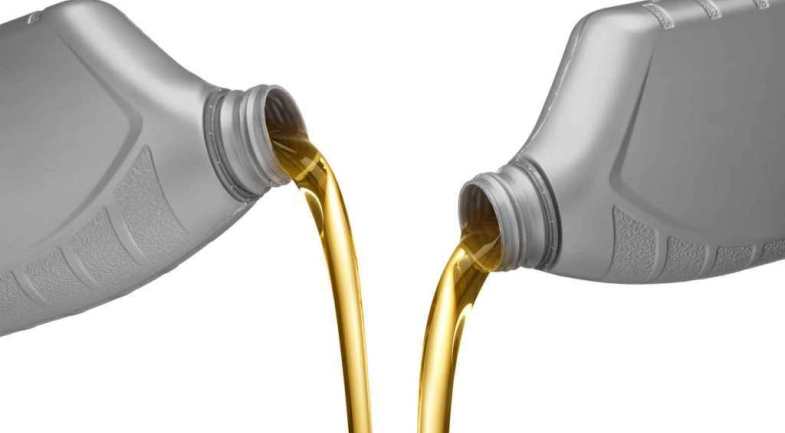Synthetic or semi-synthetic - what is better for the engine
July 15, 2017
Choosing engine oil- This is a responsible occupation, since the effectiveness of the engine operation depends on its quality, as well as its service life. The question is what butter is better: synthetics or semi-synthetic are set all drivers. Therefore, it is worth studying the main characteristics of both kinds to find out what they are suitable for what.
Synthetic oil
The use of engine oil is a guarantee of a long and stable engine operation. During the entire period of its existence, the quality standards have repeatedly changed and complemented. They depend on the country of exploitation, as the heavier condition for the car, the higher the high quality there should be fluid.
With the expansion of the automotive goods and the range of liquids, the question becomes very relevant, which oil is better: synthetics or semi-synthetic.
The main task is to reduce the friction of the engine elements during the installation of the machine. It provides less gasoline consumption, as well as less abrasion of engine elements. Tasks include still cleaning the motor from Nagar and various sediments that appear during operation. The synthetic composition is coping with this.

Its advantages are:
- Resistance to different temperatures and their sharp change.
- Increased engine life - this is provided by various additives in purified oil.
- Better functioning in difficult conditions - when working at idle or during engine warming, it better protects parts.
- Efficiency - synthetic oil slowly processed in the engine.
- No oxidation.
- The high degree of penetration - enters all parts of the engine, but with the possible engine flowing, this item ceases to be an advantage.
The main disadvantage of this composition is its high cost.
What is the difference between the synthetics from the semi-synthetic oil - the method of manufacture and composition. In the production of synthetic oil, oil is taken as the basis, which is processed and is divided into molecules. Of these, the final composition is already formed, which is enriched with various additives to improve its characteristics. Such recycling and cleaning improves the viscosity of the composition, which improves its work.
Semi-synthetic oil
The semi-synthetic is manufactured by mixing ordinary mineral oil (that is, crude oil) and synthetic with all sorts of additives.
The percentage ratio may be different. It depends on the manufacturer. It can be 50 by 50 or 70 to 30. The more expensive oil, the greater the likelihood that in its composition a significant part of synthetics . The advantages of such a fluid include:
- Low price.
- Protection of details from wear.
- Optimal penetration ability.
- Small evaporation.
It can be said that semi-synthetic oils have almost all the characteristics of synthetics, but it is much cheaper due to the low cost of components in the composition. When motorists are wondering what is the difference in synthetics and semi-synthetics, it is necessary to pay attention mainly on the price of oils. Semi-synthetic is advisable to use for inexpensive cars, as well as for old, "favorite" cars. Its efficiency will be less than that of synthetics, and the flow rate is greater, but in some parameters it wins significantly for a certain circle of cars.

The main parameter to pay attention to when choosing a fluid is viscosity.On each package there are several labels, which can determine the boundaries of the temperature at which the oil will function normally. With the same labeling there is no special difference, which oil to choose, since the efficiency will be almost the same.
Dependence of the choice of car type
The question when choosing a motor oil, which is better: synthetics or semi-synthetic, occurs even when it seems to be all the main characteristics and features of the oils of the motorist are known.
There is always a doubt that the option will be better working better, but it is not always true.
The product selection will depend on the following parameters:
- Country out car.
- The term of his service.
- Mileage.
- Used oil used.
You can decide on the choice after reading the recommendations in the instructions for the car and consulting with the seller in the store. For cars of the domestic auto industry (especially old) fits semi-synthetic.
It will also work well on a completely new car, as it has no micro-damage in the details. Regarding the new car, the country of production does not matter much, since the motor in any case was not used.
For engines with mileage, the difference in synthetics or semi-synthetic is important. If earlier it was used a cheaper option, then after 10-15 thousand km run, it is better to go to the synthetics. This will extend the service life of the motor, as synthetics are more dense and better covers all the details.
When the driver buys a car with mileage, it is important to know which oil was used earlier, and whether there are problems with oil leakage. In the second case, you need to accurately take semi-synthetic, as it is not so fluid. But the visit to the car service will also have to do. If the previous owner enjoyed mineral oil, the transition to the synthetics will deliver a large number of problems with a new motorist.

This is due to the fact that the components of the mineral composition fall into micro-facility in detail. Fluid synthetic fluid will wash the entire useful precipitate and as a result of the host machine will have to repair the engine. In this situation, it becomes obvious that the semi-synthetic is better than synthetics. It contains in itself the share of mineral oil, so the entire useful sediment will remain in place.
Mix half and synthetic compositions should not be, as it can give an unpredictable result due to a combination of additives. It is better not to risk, but simply pick up the oil suitable for the main parameters.
Operating conditions are also important to consider. If a long trip is planned, especially in the country with very cold or, on the contrary, a hot climate, that is, it makes sense to take advantage of the synthetic composition. With it, the engine will definitely function normally. However, it is necessary to change the oil in a special car service, so as not to damage the car. May also need to replace oil filters.
The oil change should be carried out only after washing the engine. The combination of particles of different compositions can spoil the engine. If the auto owner decided to move with synthetic on mineral oils, then their shift is also better to entrust professionals.
Engine type affects the choice of motorists. A semi-synthetic is suitable for new DVS, and more expensive synthetics will be required for new turbine engines.

Before buying the oil, the following steps should be performed:
- Find out which oil is recommended by the manufacturer.
- Specify the possible range of suitable products from specialists - it does not have to be vendors in stores, it is much better to talk to a proven familiar master. In this case, the Council will be supported by experience, and not a commercial benefit.
- Rate the condition of the machine and operating conditions - if there were problems on semi-synthetic in winter, that is, it makes sense to go for this time of year on the synthetics. This will require certain costs, but they will pay off if regular use of the car is planned.
- If possible, stop the choice on the product of the famous brand. Cheap oil of unknown production, even synthetic, can harm the car. Temporary savings on the purchase in this case will be wrapped with high repair costs.
The final choice of oil, synthetics or semi-synthetics, and the solution to the question is better for each motorist. There is no unambiguous answer to this question. With an adequate ratio of the cost of the consumable fluid and the price, as well as the characteristics of the car, you can choose the optimal option that will help the engine better and longer.











